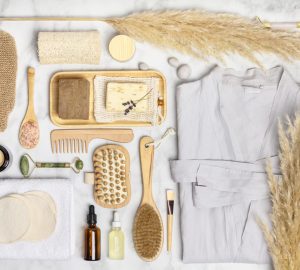It’s something we need to bottle – the secrets to a happy life that is. But while there are plenty of ways to improve your levels of happiness, Shannah Kennedy and Lyndall Mitchell, the authors of the book Shine, 20 Secrets To A Happy Life, explain one way that might just surprise you … and that is journaling.
“Journaling is the minds way of processing our thoughts,” the authors Shannah and Lyndall explain. “Typing is not as effective as writing. This is your outlet for all sorts of feelings, thoughts, emotions, frustrations and gratitude.
“A great way to start is to put a pen and pad next to your bed and before you go to sleep write down the 3 things you are grateful for today. Some days you may write 3 words other days you may write 3 pages. Journaling about gratitude before bed trains our brain to go to sleep in a positive frame of mind.”
What also might surprise you is they explain that: “Just like we have a genetic healthy weight range – to live at your peak is about being at the top of your range not the bottom. Similarly, we have a genetic happiness range – when you consistently invest in your own happiness you can live at the top of your range more consistently, without investing in the skills you may end up being in the lower range.”
Setting boundaries is also essential to becoming a healthy adult and balancing your work and personal life effectively. “It demonstrates your commitment to self-respect,” they explain.
Half of the troubles people are having can be traced to saying yes too quickly and not saying no soon enough. Having strong boundaries is an essential skill for calm confidence and a foundation for your own wellbeing. Life with boundaries doesn’t mean being rigid or inflexible, instead having good boundaries creates and cultivates a purposeful life with great meaning and happiness. It allows you to stay in the driver’s seat. It means doing things you deem important and letting go of those you don’t want to do.

The Essentialists, 20 Secrets to a Happy Life. Published by Penguin Random House Australia
Shannah Kennedy and Lyndall Mitchell’s Top Tips for Boundary Setting
S elf- Care. Learning the art of putting yourself first so you can be the best version of self personally and professionally. Every day taking 2-3 blocks of time for self-care. We have 72 x 20-minute blocks of time every day. How many 20 minutes blocks can you take for yourself daily?
A wareness. If you take more time for self- care then you will have a higher level of self-awareness. With a high level of awareness, you can then easily think of your feelings on scale 1 to 10, when you get near a 7 or higher chances are someone has just crossed your boundaries. This is the moment to pause and ask yourself:
- What is causing that?
- What is it about this interaction, or the person’s expectation that is bothering me?
When someone acts in a way that makes you feel uncomfortable, that’s a cue to us they may be violating or crossing a boundary. This is the time to pause and process before moving forward.
S pace. Before committing to the next party, event or task (especially if you’re a yes person), have a standard response of “I just need to check my diary and get back to you”. This puts space between you and the decision and gives you an opportunity to check in with your values and see if this activity, task or event will add to your values or take away. Once you have had the space it will be easy to make the right decision to support your health and wellbeing moving forward.
Saying NO is important. Always ask yourself, what is the cost of this on my time, and health? Having the commitment to yourself to say no, when it doesn’t feel right. But remember when it comes to journaling, say YES!




